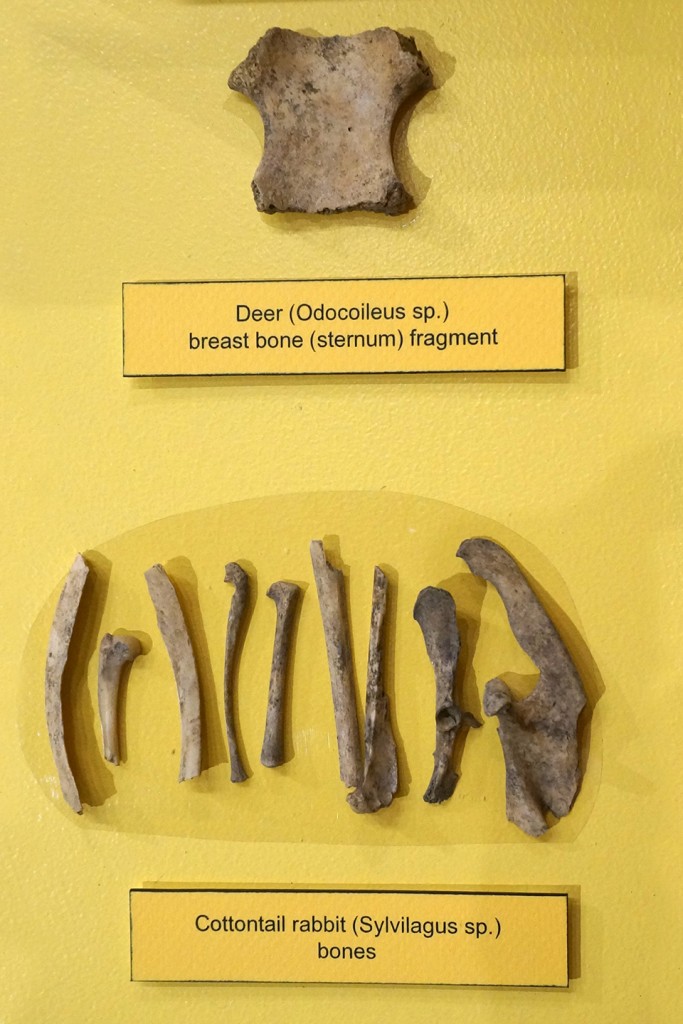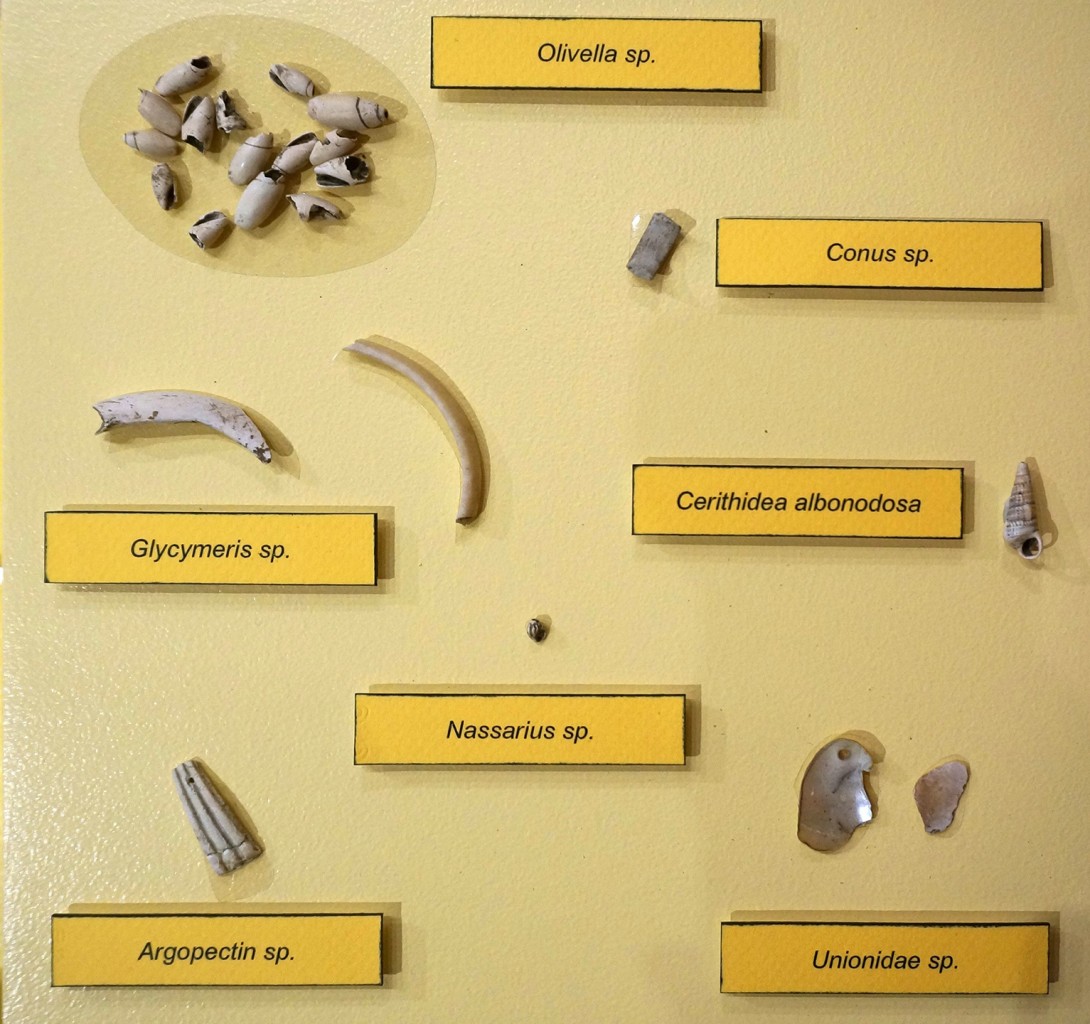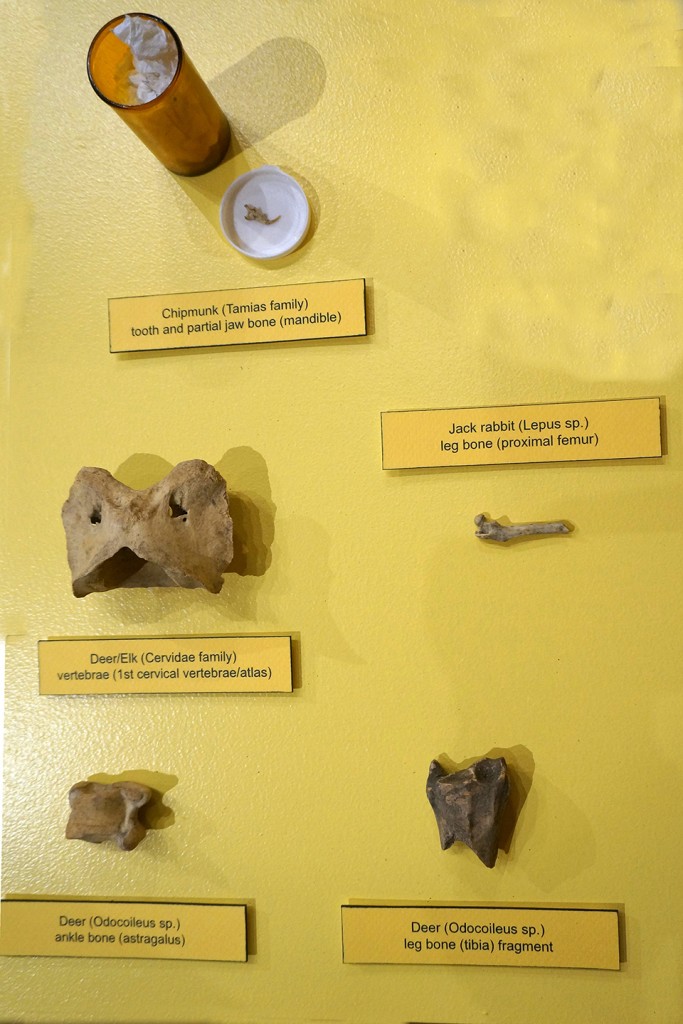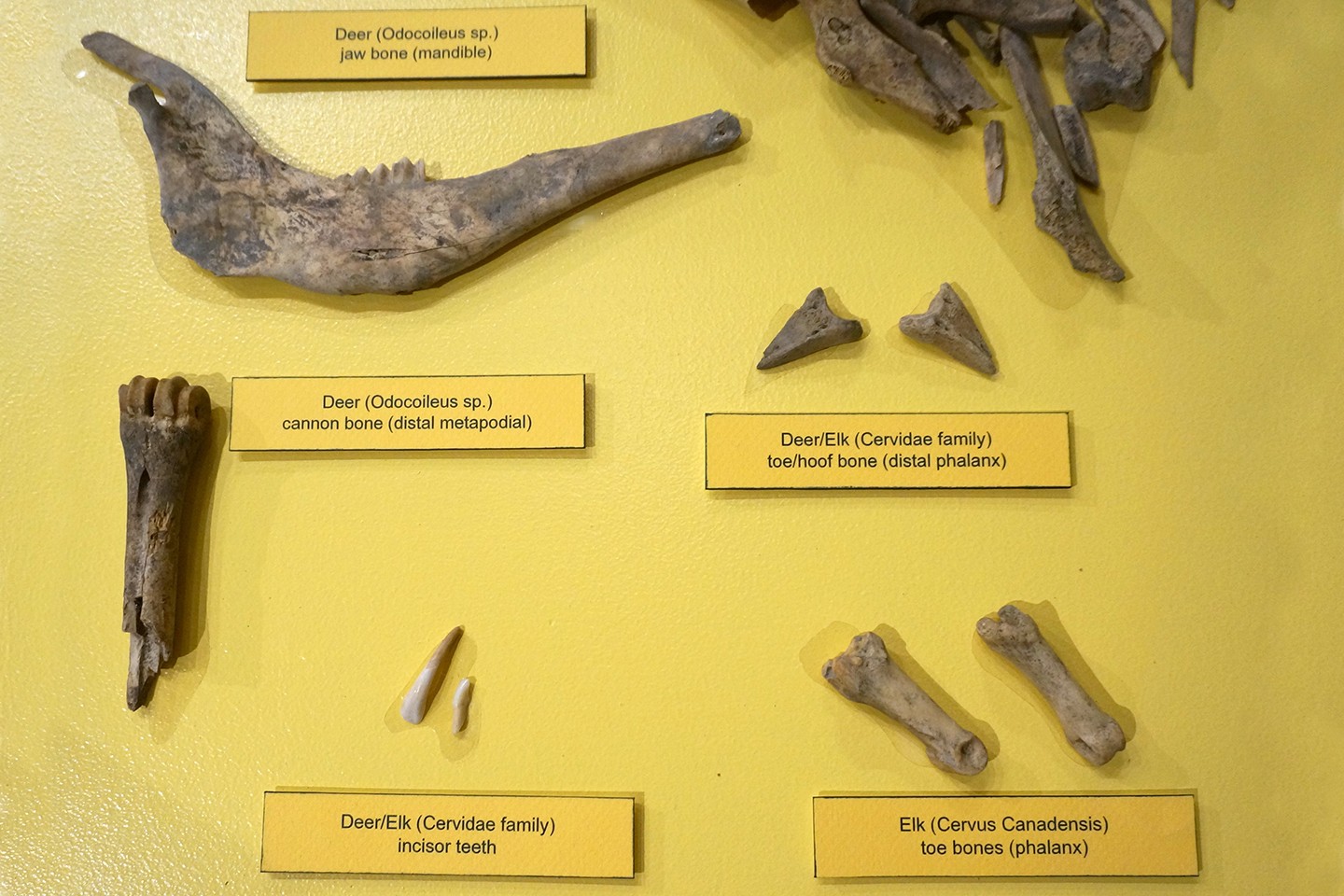Faunal remains include bones, shell, hair, chitin (exoskeletons of crustaceans), scales, hides, proteins and DNA. Of these items, bones and shells occur most frequently at archaeological sites in the American Southwest. Analysis of these remains reveals information on what animals were utilized for food, tools, and other uses and provides insights into the species available in past environments. Analysts also look for butchering marks that may reveal processing patterns and can occasionally determine age and gender of an individual. Bone tools include awls, needles, scrapers, and combs.
Analysis of bone from the Cañada Alamosa sites has yielded the usual pattern of mule deer and rabbits but has also supported growing evidence that bison roamed the nearby Plains of San Agustin until late in the pueblo period.
Shell artifacts provide insight into changing trade and procurement patterns. Most of the shell in the prehistoric Southwest originated on the west coast of Mexico and was traded. Common species include Olive/la and Glycemeris which were used as pendants and bracelets. In addition to these two shell species, the Cañada Alamosa shell includes Nassarius, Cerithidea albonodosa, Conus and Argopecten. The relatively small amounts of shell reflect the isolation of the Cañada Alamosa sites as broken shell ornaments were often retooled and reused. Freshwater shells (Unionidae) from the Gila River are also present.





